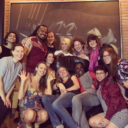Without social movements, much of the change we hope to see in the world will be impossible. Social movements shift narratives, develop new understandings of the world, and build the demand for action. History shows that research and evidence alone do not change hearts and minds, nor put pressure on those in power to act. We need a groundswell of popular support to move from ideas to impact.
Yet philanthropic funding for social movements is often fraught. Recent research on movement capture by foundations in the US Civil Rights era shows how even well-meaning philanthropists can distort the aims of the communities they seek to support. How can funders tackle this? How can we support the field, without imposing our own agendas? One method is via participatory processes.
Many funders are experimenting with methods of bringing activist communities into their philanthropic decision-making processes. Done well, this has the potential to offer several benefits.
Being led by those on the frontlines
Involving people who are most affected by the outcomes in decision-making processes allows funders to be led by the movement they seek to support. This requires more than simple consultation; a participatory design process offers true agenda-setting. This may be more complicated than working with normal professionalised NGOs, as most social movements have decentralised leadership structures rather than an easily-contactable Executive Director. But supporting social movements means going beyond ‘the usual suspects’, and hearing directly from those with lived experience.
Builds capacity on both sides
Jumping through the grant-seeking hoops set by foundations turns incredible activists into mediocre fundraisers. But participatory grantmaking offers activists an opportunity to inform the grantmaking process so that it is relevant to their context, as well as giving them an insight into some of the challenges and opportunities that foundation funding can offer. By bringing together funders and movements, everyone is better informed about how the potential relationship could work.
Opportunities for solidarity
The people leading social movements are often doing so because their community, identity or values are threatened. They work tirelessly, with little in the way of the resources or recognition. This is why it can be so helpful for funders to offer the opportunity to gather, reflect and share. Feedback from participants of participatory grantmaking often shows that the most valuable part of the process was the time and space to connect and learn from one another. Funding social movement actors to engage with the grantmaking process – by reviewing each others’ proposals, for example – can build the spirit of reciprocity, learning and collective action that builds solidarity. In doing so, the grantmaking process can build, rather than co-opt, social movements.
The Participatory Grantmaking Collective is an informal group of practitioners who have been working together and within their organisations to promote equitable decision-making in philanthropy. It includes Nadia van der Linde, Stellah Wairimu Bosire, Jovana Djordjevic, Diana Samarasan, Ruby Johnson, Katy Love, and Rose Longhurst.
Mass citizen action through social movements and other popular forms of organising are a defining feature of our times fundamentally changing our civic space. Yet, institutional philanthropy has often been missing in action either unable or unwilling to engage and, when it does, met with concerns about the distorting effect of its resources and practices.
 Alliance magazine’s coverage of social movements is the focus of our June 2020 issue, out now. The issue investigates how institutional philanthropy can make itself relevant to the needs of social movements by deepening their understanding of movements and discovering appropriate ways to engage. To read the June 2020 issue and more coverage of philanthropy, you can purchase a subscription to Alliance magazine.
Alliance magazine’s coverage of social movements is the focus of our June 2020 issue, out now. The issue investigates how institutional philanthropy can make itself relevant to the needs of social movements by deepening their understanding of movements and discovering appropriate ways to engage. To read the June 2020 issue and more coverage of philanthropy, you can purchase a subscription to Alliance magazine.






Comments (0)